The world of programming evolves at an incredible pace. Every year, new technologies, frameworks, and, of course, trending languages emerge. Are you ready to lead in 2025? At Lab9we know that staying up to date is the key to success in software development, UX/UI design, and innovation consulting. That’s why today, we’re sharing the programming languages you need to master to stand out in the market this year.
Why is choosing the right language important?
Learning a programming language isn’t just about following trends. Choosing the right one depends on:
- Market demand: Which technologies are companies looking for?
- Versatility: The ability to solve different problems.
- Ease of learning: Ideal if you’re just starting in the tech world.
With this in mind, here are the languages that will dominate the industry in 2025.
1. Pyhton: The all-purpose favorite
Why is it still leading?
- Python is versatile,easy to learn, and perfect for booming fields like machine learning, artificial intelligence, and data analysis..
- Its massive community ensures tons of resources, libraries, and support.
Where is it used?
- Web development (Django, Flask).
- Task automation.
- Data science and big data.
💡 Lab9 Tip: Python is ideal if you want to get into programming without dealing with complex syntax.
2. JavaScript (and TypeScript): The king of web development
Why is it essential?
JavaScript remains the cornerstone of web development, powering dynamic, modern, and responsive applications. Its “big brother, TypeScriptadds static typing, making it ideal for larger, scalable projects.
Where is it used?
- Frontend: React, Vue.js, Angular.
- Backend: Node.js.
- Mobile development: React Native.
2025 forecast: With the growth of progressive web applications (PWAs),JavaScript will remain indispensable.
3. Go: The rising star for scalable systems
What makes it special?
Created by Google, Go (or Golang) combines simplicity, efficiency, and power. It’s the preferred language for distributed systems and cloud applications due to its performance and ease of use.
Where is it used?
- Microservices.
- High-concurrency backends.
- DevOps tools (such as Docker and Kubernetes).
🚀 Why learn it?
The demand for scalable architectures and cloud solutions will keep growing in 2025.
4. Rust: The future of systems programming
Why is everyone talking about it?
Rust is known for its focus on security and performance, making it the top choice for building robust software without memory errors.
Where is it used?
- Operating systems.
- Video games.
- High-performance applications.
Interesting fact: Companies like Amazon and Microsoft are already using Rust extensively.
5. Kotlin: The go-to for mobile development
Why do we need it?
Kotlin has solidified its place as the official language for Android app development. Its modern syntax and compatibility with Java make it essential for those looking to excel in mobile development.
Where is it used?
- Android applications.
- Backend development (with frameworks like Ktor).
2025 outlook: With Android’s ongoing popularity, Kotlin remains a safe bet.
6. SQL: The timeless essential
Why is it a must-have?
Data management is still at the core of every application. SQL,though not a "modern" language, is crucial for working with relational databases like MySQL, PostgreSQL, and SQL Server.
Where is it used?
- Business data management.
- Data analysis.
- Backend applications.
7. C#: The favorite for game development and more
Why is it relevant?
C# powers engines like Unity, widely used in video games, AR/VR applications, and simulations. It’s also a powerful tool for enterprise applications with the .NET framework.
Where is it used?
- Game development.
- Cross-platform applications.
- Enterprise software.
8. Swift: The future of iOS apps
What makes it special?
Swift is Apple’s official language for developing applications for iOS, macOS, watchOS, and tvOS. Its performance and user-friendly syntax make it a must-have for mobile development.
Where is it used?
- Native iPhone apps.
- Enterprise applications in the Apple ecosystem.
9. R: The powerhouse for complex data analysis
🚀 Why learn it?
If you’re interested in data analysis and statistics, R is a powerful tool for processing and visualizing complex information.
Where is it used?
- Data science.
- Financial analysis.
- Academic research.
10. Java: The classic that keeps evolving
Is it still relevant?
Absolutely. Despite growing competition, Java remains the backbone of enterprise applications, banking systems, and Android apps. Its robustness makes it indispensable for large-scale projects.
Where is it used?
- Backend development.
- Enterprise applications.
- Android solutions.
How to choose which language to learn
With so many options, it’s normal to feel overwhelmed. Here are some tips to help you decide:
- Think about your career goals: Do you want to specialize in frontend, backend, or data science?
- Consider local demand: Research what companies in your region are looking for.
- Try before committing: Explore free tutorials and courses to see which language feels most comfortable for you.
Want to learn more about programming, UX/UI design, and tech innovation?
Follow us on social media for updates, tips, and the latest trends in the tech world! 🚀
